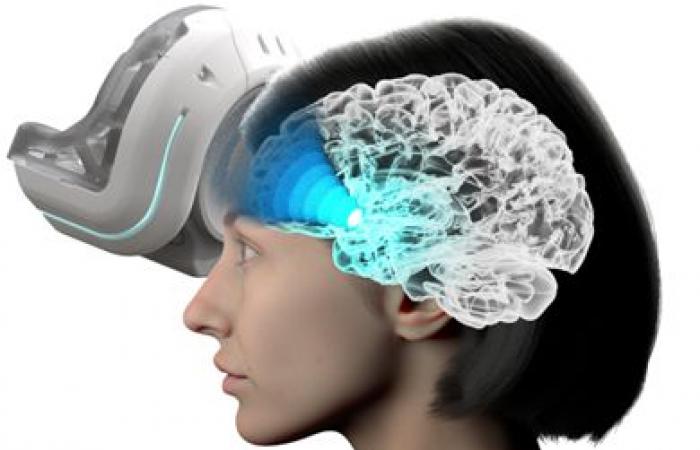© Alexandre Dizeux
The characterized depressive episodes are the most common mental disorders in the world. One in five people will suffer from depression in their lifetime, with a suicidal risk responsible for several thousand deaths per year in France. A new study published in the newspaper Brain Stimulation And led by researchers from GHU Paris, Inserm, CNRS, Paris Cité University and ESPCI Paris-PSL reveals promising results with five consecutive treatment with the help of ultrasonic focused of low intensity modulating the activity of deep brain regions involved in depression.
In 2021, a Health barometer produced by Public Health France revealed that 12.5 % of people aged 18 to 85 had experienced a depressed episode characterized during the previous year [1]. Despite progress in the drug treatment of depression, the therapeutic effects of antidepressants have a period of action of several weeks and approximately a third of patients do not respond enough to these drugs 2.
It is therefore essential to develop new therapeutic approaches offering faster action. One of the strategies for the treatment of depression resistant to drugs is brain stimulation of the deep brain regions involved in this disorder, such as the subcalular cingular region, but it was so far possible only with an implantation of intracerebral electrodes, an invasive procedure associated with a significant neurosurgical risk, limiting its accessibility to a small number of patients.
A new study associating researchers and doctors from GHU Paris, Inserm, CNRS, Paris Cité University and ESPCI Paris-PSL, published in the newspaper Brain Stimulation Shows promising results of a treatment over five consecutive days based on the use of low -intensity focused ultrasound. This innovative technology makes it possible to modulate the activity of the deep brain regions involved in depression, but this time in a non-invasive manner. Ultrasounds have the property of spreading in human tissues and stimulating the brain area on which they are concentrated, by mechanical action, by triggering the opening of mechano-sensitive channels. However, the irregularity of the thickness of the skull, deviating ultrasound and limiting the ability to focus precisely on the area to be targeted, prevented the development of this technology for several decades. At GHU Paris Site Sainte-Anne, psychiatrists and researchers Marion Plaze and David Attali, in the service of Dr. Thierry Gallarda, participated in the development and implementation of an innovative portable device based on the use of acoustic lenses concentrating ultrasound with unprecedented precision. These lenses make it possible to compensate for the distortions of the ultrasonic waves induced by the crossing of the cranial box. Indeed, the researchers managed to model the effect of the skull on the ultrasound and to deduce the optimal shape of these acoustic lenses, manufactured in a unique and personalized manner for each patient. The lentil technology was developed at the Physical Institute for Medicine (Inserm, ESPCI Paris-PSL, CNRS) by researchers and engineers Jean-Francois Aubry (CNRS), Thomas Tiennot (ESPCI) and Mickael Tanter (Inserm), study co-authors, who patented technology and co-founded the Sonomind startup with Jeremy Bercoff, President, President, President And Philippe Chapuis, technical director, in order to accelerate the clinical transfer of this technology.
The ultrasonic transcranial stimulation of precision thus obtained represents a leading technological advance in the field of personalized medicine and neuroscience. It allows for the first time to stimulate in a targeted, precise and non-invasive manner the deep brain structures, such as the subcalular cingular region, with a transportable device.
The clinical trial consisted in 5 consecutive days of ultrasonic treatments in this brain area. This protocol was carried out on 5 patients with severe and drug -resistant depression in order to test the safety of this new approach. The results are encouraging, with the absence of a serious unwanted event and excellent tolerance: patients reported not feeling any discomfort or pain during the sessions. The scores of severity of depression have also gradually decreased over the days of treatment, with an average reduction of more than 60% of the severity of depression on the fifth day of the protocol.
-« Although the results are encouraging, they must be interpreted with caution, because this is a first safety study on a limited number of patients and without Placebo group Specify researchers.
Additional studies are necessary, and already planned, on larger cohorts of patients. If the rapid and marked therapeutic effects are confirmed, as well as the profile of innoceity of the technique and the persistence of the effects in time, transcranial stimulation by ultrasound could see its applications multiply in the coming years and extend to psychiatry, addictology and neurology, for the benefit of many patients.
These works are the culmination of 25 years of research on the methods of focusing ultrasound across the skull, 15 years on the modulation of cerebral activity by ultrasound and 7 years of collaboration between psychiatrists – researchers from GHU Paris and the Institute of Psychiatry and Neurosciences of Paris (Inserm/University Paris Cité), and researchers at the Physical Institute (CNRS/ Paris-PSL/INSERM).
Research has benefited from the continuous support of INSERM, CNRS and ESPCI Paris-PSL, GHU Paris and the University of Paris Cité, as well as financial support from the Bettencourt Schueller Foundation, the National Agency for Innovative Research and Funding of INSERM (Impulse Program in Neurotechnology and Technological Research Accelerator). The clinical trial has received financial support from the Focused Ultrasound Foundation (Charlottesville, VA, USA).
[1] Prevalence of depressive episodes in France in 18-85 year olds: results of the health barometer 2021
2 Rush et al, American Journal of Psychiatry, 2006








